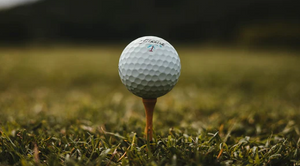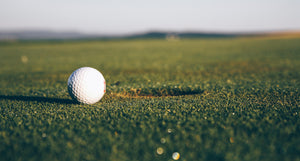Why Don't Pros Use Colored Golf Balls?
Brightly colored golf balls are all the rage at local courses. We frequently see neon green, yellow, pink, and orange outside professional tournaments, but why do pros shy away from the luminous and vibrant golf balls we all love?
Well, that's what we aim to answer with this guide! We'll cover everything from professional guidelines to the impact your golf ball could make on your play. There's a reason why you're more likely to see white golf balls on a professional course, but it might not be quite why you think!
Can Professional Golfers Use Colored Golf Balls?
The short answer is yes, they can. In fact, professionals can choose from over 750 colored balls during a tournament. If professional players don't use one of the colors on the provided list, they could incur fines, disqualification, or even suspension from future competitions. Acceptable colors vary between tournaments, but generally, they include the following:
- Yellow
- Green
- Gold
- Orange
- Pink
- Red
And others, too - so why do so many players stick to white? Well, we'll get into that a little further down. The more important question right now is whether or not you can play with your chosen ball on the course. Though it may come as a surprise, some amateur golf clubs are more restrictive than professional tournaments.
This is because, on a professional level, as long as the ball you use adheres to the requirements set out by the PGA, you can use any color you desire. Amateur golf clubs aren't always as accommodating. Some individual courses have strict dress code policies, extending to the color of the ball you use! Clubs may make exceptions when a player uses a colored ball due to vision complications.
Do Any Pros Use Colored Golf Balls?
Yes! In fact, some of the most successful professional players in the game have started to use colored balls during tournaments. Perhaps the most famous example is Bubba Watson, who has become renowned for using bright pink golf balls with his pink drivers.
This was a notable event because the first time Watson used them was at the Masters at Augusta, one of the most traditional golf clubs in the world! KJ Choi has also drawn attention by using bright yellow balls, similar to the three-time US Open Champion Hale Irwin used in the 1970s and 80s. All that to say, bright-colored golf balls in pro tournaments aren't anything new; they remain in use to this day. They just aren't as common as their white counterparts.
Some pro players will use colored balls in their televised games as a form of sponsorship.
For instance, in 2017, Watson signed a sponsorship deal with the South Korean brand Volvik. They are known for their brightly colored golf balls, so Watson has continued using their neon green balls for years.
Why do Most Professional Golfers Prefer White Golf Balls?
Simply put, a lot of it comes down to familiarity. If they've been interested in the sport since childhood, they will likely have spent years watching professionals play on TV. These professionals typically have used white balls, so players will want to emulate that. Seeing a white ball soaring across the green is iconic among golf enthusiasts, so it's an understandable preference.
This goes much deeper than nostalgia, too. Golf is a repetitive sport, so consistency is critical to effective play. It might sound unusual, but the ball's color may impact player performance. We know color significantly affects memory, so sticking to the same color ball from practice to tournament could improve your performance!
In addition to the role of memory, branding plays a big part. The top golfing brands all produce more white golf balls than any other color. This means that the top players will naturally follow this trend, especially if sponsorships are involved in any way - and in tournaments, they often are.
In terms of practicality, white balls do have some distinct benefits. It's easier to see a white ball against grass or sand, meaning you can keep a closer eye on its location while you play. Even if you accidentally hit it into a bunker or sand pit, you should be able to hit it out again, much more accessible than if it was green or orange.
Frequently Asked Questions
Do Colored Golf Balls Make a Difference?
Yes and no, depending on how you play and your expectations. Fundamentally speaking, the only difference between a white golf ball and a colored golf ball is the cover of their case. For most players, this won't make a difference beyond aesthetics. Those with visual contrasts, however, may benefit enormously from a brighter ball. It's all preference!
Can You Play a Colored Ball on the PGA Tour?
Yes! As long as the ball adheres to the requirements set out in the guidelines, the color is entirely up to you. Remember that many tournaments do not let you change the ball's color during the same round, so commit to it if you opt for a bold color.
Is it Okay to Practice with Colored Balls on the Course?
Most of the time, yes, but not always. If you've been playing at golf clubs for some time now, you will be all too aware that they can have stringent dress codes. This even extends to ball choice. Always double-check with the club rules before investing in a particular color, as they may not share your taste!



